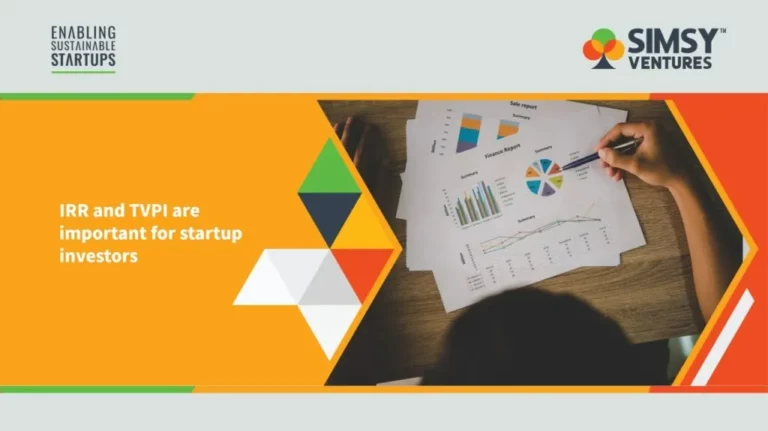Startup Funding From Zero to Series A Stage
What is startup funding and why is it important?
Startup funding is vital for early-stage businesses. It allows them to grow, scale, and achieve profitability. However, attaining startup funding can be a difficult and challenging task. This guide will provide an overview of what startup funding is and why it is important.
Startup funding refers to the money that is raised by a company in order to finance its early-stage operations. This can come from a variety of sources, such as venture capitalists, angel investors, or even the founders themselves.
The importance of startup funding lies in its ability to help a company grow and scale. With the right amount of funding, a startup can hire additional staff, expand its product offerings, and enter new markets. Additionally, startup funding can help a company attain profitability sooner than it would otherwise be possible.
Defining startup funding stages
In the early stages of a startup, funding is essential to keep things moving forward. The amount of money required at each stage varies depending on the business and its goals.
However, there are general guidelines for how much should be raised during each stage of a startup’s development. The first stage of funding for a startup is typically called the pre-seed stage. This is when the founders are just getting started and don’t have much to show investors yet. They may have an idea or a prototype, but they haven’t begun generating revenue. During this phase, startups usually try to raise between $50,000 and $1 million. The next stage is the seed round, which is when the startup has a bit more to show investors. They may have launched their product or service and begun generating some revenue.
How to raise money at each stage
If you’re starting a business, you’ll need to know how to raise money at each stage. Here’s a guide to startup funding, from zero to Series A/B stage. At the very beginning, when you have an idea but no product or team, you’ll need to find a way to get started. This is often done through friends and family, or by bootstrapping your own resources.
Once you have a product and a team, you’ll need to start looking for more substantial funding. This usually comes in the form of angel investors or venture capitalists. Finally, once you’ve built up some momentum and traction, you’ll be able to approach larger investors for a Series A round of funding. This will help you scale your business even further.
Which stage is right for your startup?
When it comes to startup funding, there are a few different options available. But which one is right for your business? Here’s a quick overview of the different stages of funding, and what you can expect at each stage. The first stage of funding is known as the pre-seed/seed stage.
This is when you’re just getting started, and you need capital to get things off the ground. Seed money can come from friends and family, angel investors, or even crowdfunding.
The next stage is called the Pre-Series A/Series A stage. This is when you start to look for more significant investments from venture capitalists or other investors. At this stage, you’ll need to have a solid business plan and some traction to show that your business is viable. Finally, there’s the Series B stage and other follow-on growth stage rounds.
Stage One: Pre-seed
Pre-seed is the earliest stage of startup funding. It’s typically used to validate your business idea and get initial traction. If you’re looking to raise pre-seed funding, you’ll need to have a clear understanding of your business model and how you plan to generate revenue.
You’ll also need to put together a strong team of co-founders and advisers. Pre-seed funding can be difficult to secure, but it’s an essential step in getting your business off the ground. With the right preparation, you can increase your chances of success.
Stage Two: Seed
As a startup matures, it typically goes through three major funding stages: Seed, Series A, and Growth. The seed stage is when a company is just getting started and is looking for initial funding to help get the business off the ground. This is usually done through angel investors or small venture capital firms.
The amount of money raised in this stage can vary widely, but it is typically between $250,000 and $2 million. The key things that investors will look for in this stage are a strong team with a good track record, a clear vision for the company, and a solid business model. If you can show that you have all of these things, then you should be able to successfully raise seed funding for your startup.
Stage Three: Series A
As a startup company progresses and begins to generate revenue, it will eventually need to seek out more funding in order to continue growing. The next step after seed funding is known as Series A funding. Series A funding is typically raised from venture capitalists or other professional investors. This round of funding is usually larger than the seed round, and it is used to finance the company’s growth. In order to secure Series A funding, startups need to have a solid business model and proof of traction. They must also be able to articulate their vision for the future and show how they will use the additional funds to achieve their goals.
Stage Four: Series B
As a startup company matures, it will inevitably need more funding to continue growing. This is where Series B comes in. Series B is the second major round of funding for a startup.
It usually follows a successful Series A, where the company has proven its viability and is now looking to scale up its operations. Series B funding can be used to hire more staff, expand into new markets, or develop new products. The amount of money raised in this round can vary widely, but it is typically much larger than the Series A.
Investors in a Series B round are usually more established firms or venture capitalists who are willing to take on more risk. They are also often looking for a bigger return on their investment than what was possible in the earlier rounds.
The benefits and drawbacks of each stage
In the early stages of a startup, funding is essential to get the business off the ground. However, each stage of funding has its own benefits and drawbacks. The first stage of funding is known as the seed stage.
This is when a startup is just getting started and needs initial funding to get going. The main benefit of this stage is that it gives startups the opportunity to test their product or service without much risk. However, the drawback is that seed-stage funding is often difficult to obtain. The next stage of funding is known as the Series A stage.
This is when a startup has a proven track record and is looking for more significant investment. The main benefit of this stage is that it allows startups to scale their business quickly. However, the drawback is that Series A funding can be difficult to obtain if a startup doesn’t have a strong track record.
Conclusion: The final stage
After the hustle and bustle of acquiring funding for your startup, it’s time to take a step back and assess where your company is at. It is key to understanding the growth, progress, successes, and failures of your business journey.
Here are a few things to keep in mind during this crucial time. First and foremost, it’s important to reflect on the progress made since starting your company. What goals were accomplished? What milestones were hit? These reflections will help you better understand what works well for your business and where improvements can be made.
It’s also important to take stock of any new challenges that have arisen. Perhaps the market has shifted, or a new competitor has entered the scene. These challenges can provide valuable insights into how to adapt your business model moving forward.




